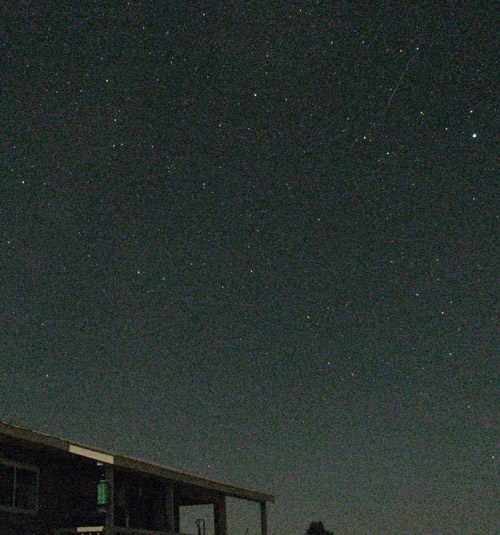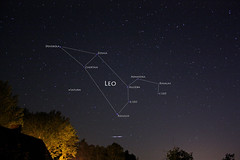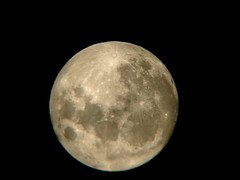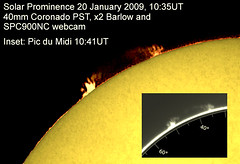Saturday, October 24, 2009
Portrait of Bright Spokes
Saturday, September 5, 2009
First Star Trail Attempt
To achieve this photo I used the following:
My K7
No tripod (I just sat the camera on the ledge)
16 shots in raw plus one dark frame (turned off slow frame NR, then turned it back off tor the dark frame)
ISO 500
f6.3 (Pentax DA16-45)
30" Shutter
Cable Release (I found interval timer inbuilt didn't work properly for some strange reason, I think because of the buffer limits)
Photoshop CS4
Lightroom (to process the raws)
Star Trails (this app really suprised me, its amazing)
Vertus fluid mask
Believe it or not I used absolutely no noise reduction software.
Clever stuff on the astronomy for beginners group.
Wednesday, August 19, 2009
Monday, June 1, 2009
Monday, May 4, 2009
Astronomy for beginners Smithsonian Photography Call
Smithsonian click! Photography Call for Entry | |
Because of our group Astronomy For Beginners interest particularly in astrophotography, please help us spread the word about the Smithsonian Photography Initiative’s call for entries for click! photography changes everything – an online exhibit that invites the public to consider ways in which photography influences every aspect of our lives. |
Thursday, April 9, 2009
Wednesday, February 25, 2009
Too cloudy to see Comet Lulin
Thunderstorms are expected to drown out one of the most exciting evenings for local astronomers.
Suzanne Willis, interim chair for the Department of Physics, said Comet Lulin, discovered in July of 2007, will be most visible to the naked eye tonight between the hours of 8 and 10 p.m.
Willis said Lulin, which is located near the orbit of Saturn, will make its nearest pass by earth before leaving our range of visibility for good. Sadly for the Midwest region, Lulin will not be easily detectable through the storms this evening.
“Lulin is now observable to us for the first time, and it will be the last in a matter of a few weeks,” Willis said. “Comets are on very long orbits often for periods of 100 years, Halley’s Comet included.”
Visibility of Comet Lulin is best achieved with a very dark sky and binoculars to enhance details of the comet, Willis said.
According to National Geographic Daily News, Lulin could be on its first pass by the sun.
“As the object is exposed to the sun’s heat for the first time, its ices will vaporize, possibly causing the comet to brighten rapidly or even break apart,” the Daily News reported.
Tuesday, January 27, 2009
Solar Prominence
Monday, January 12, 2009
Friday, January 9, 2009
Perigree Moon
Last month's full Moon over many viewpoints was particularly radient, and it looked bigger than usual. That's because it was the biggest full Moon of 2008 a perigee Moon, 14% wider and 30% brighter than the smallest full Moons of the year.
It's going to happen again at the beginning of 2009.
On Saturday night, Jan. 10th, another perigee Moon is coming. It's the biggest full Moon of 2009, almost identical to the one that impressed onlookers in Dec. 2008.
Johannes Kepler explained the phenomenon 400 years ago. The Moon's orbit around Earth is not a circle; it is an ellipse, with one side 50,000 km closer to Earth than the other. Astronomers call the point of closest approach "perigee," and that is where the Moon will be this weekend.
Perigee full Moons come along once or twice a year. 2008 ended with one and now 2009 is beginning with another.
Another magic moment happens when the perigee Moon is near the horizon. That is when illusion mixes with reality to produce a truly stunning view. For reasons not fully understood by astronomers or psychologists, low-hanging Moons look unnaturally large when they beam through trees, buildings and other foreground objects. This weekend, the "Moon illusion" will amplify a full Moon that's extra-big to begin with because of the Parigree
At perigee, the Moon is only 360,000 km away!





